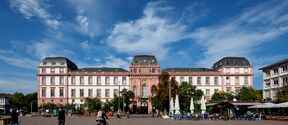Nordic researchers develop predictive model for cross-border COVID spread

As COVID-19 spread globally in 2020, many countries swiftly closed their borders to prevent the disease from entering. However, there was little scientific evidence to support the effectiveness of such measures.
While post-COVID research has extensively focused on the efficacy of internal travel restrictions, cross-border travel has received less attention due to challenges in accessing quality data. In a major multidisciplinary collaboration effort across Finland, Sweden, Norway, and Denmark, a group of researchers — including mathematicians, physicists and computer scientists — have published a pioneering study on the spread of infections across Nordic borders from spring 2020 through to the end of the year. The report sheds light on the efficacy of cross-border travel restrictions, helping us better understand which measures actually make a difference.
‘There have been many studies using data and modelling within countries, but this cross-border research is rather unique,’ says Associate Professor of Mathematics Lasse Leskelä from Finland’s Aalto University.
The researchers developed a sophisticated mathematical model relying on a long trail of footwork gathering travel data from the four neighbouring countries. Focus was on the short-term spread of the disease at a stage of the pandemic when infections had already started to spread within each country.
Border closures a blunt tool
The modelling revealed that cross-border closures were only likely to have significant impact in very specific scenarios. For example, a substantial disparity in disease prevalence between two countries would have to be accompanied by a high volume of cross-border traffic for restrictions to notably impact spread. It is notable that even though Sweden’s comparatively loose restrictions in 2020 contributed to the nation having vastly more case numbers than in neighbouring Finland, the overall impact of cross-border travel on the Finnish disease situation was low in absolute terms.
‘The way I see these results is that the closing of borders was mostly not very well justified. This was done out of uncertainty, because countries did not know what else to do. Since it has so many adverse effects, my take on this is that in the future, such drastic measures must be very carefully considered’, says Professor Tapio Ala-Nissilä from Aalto University.
However, the researchers point out that in different stages of a pandemic situation, there can be many layers of complexity. If a government must act, choosing between restricting local populations within its borders versus restricting travel across them, the latter may prove the better option.
‘According to our model, travellers from Sweden were over 10 times more likely to have COVID-19 in the summer of 2020 than the domestic Finnish population. So if you think about when the restrictions should hit and who should be affected, it would make more sense to place restrictions on these travellers at this time,’ Assistant Professor Mikko Kivelä from Aalto University points out.
The model also shows interesting differences between types of travel. Commuters, who may spend half a day in the destination country at a time, played a smaller role in spreading infections than vacationers who possibly spent their entire infectious periods in the country.
Preparing for the next pandemic
Kivelä emphasises that in spring 2020, decision-makers were faced with myriad uncertainties that made it impossible to reliably analyse and estimate the effects of their countermeasures. This is also where the current study makes its most significant contribution – as a predictive model for future use.
‘The really important part is that we have developed different ways of looking at this question: a mathematical machinery to answer questions about what border control interventions are necessary and when to apply,’ says university researcher Mikhail Shubin from the University of Helsinki.
Although the current study pertains to the Nordics, the researchers say that it can be applied to other countries as well. The main concern is getting reliable and comparable data. Often, even if the outward appearance of a particular data set is promising, details like reporting delays will complicate its usage.
‘Access to mobility is not easy to gain, and within the Schengen area in particular there is no detailed tracking for who moves where. You need to have access to lots of data sets, from road crossings to railroads, ferries and aeroplanes. We also used mobile phone data to validate our findings,’ explains Leskelä. ‘Usually, to do this detailed modelling, you need personal contacts and you need to build trust.’
The study is part of the NordicMathCovid project. The project includes teams from Finland, Sweden and Norway and involves a number of universities and public institutions across the Nordics. Supported by NordForsk, the project started in September 2020 and has produced research on pandemic flows and vaccination strategies from varying angles.
The full journal article from PLOS Computational Biology can be found at https://journals.plos.org/ploscompbiol/article?id=10.1371/journal.pcbi.1012182
Contact
Lasse Leskelä
Associate Professor, Aalto University
+358 40 537 5352
lasse.leskela@aalto.fi
Mikhail Shubin
University researcher, University of Helsinki
+358 41 755 1120
mikhail.shubin@helsinki.fi
Read more news

A paradigm shift: machine learning is transforming research at the atomic scale
Assistant professor Miguel Caro and his research group use and develop machine learning tools to accelerate discoveries from simulation to experiment
Aalto academics begin Unite! visiting professorships at TU Darmstadt
As part of the Unite! Visiting Professorship Programme, TU Darmstadt welcomed six visiting professors from Aalto University for the winter semester 2025/2026.
Entrepreneurship offers women empowerment in late-stage careers
Launching their own venture offers older women a chance to turn their age into a competitive advantage, reveals new research.






